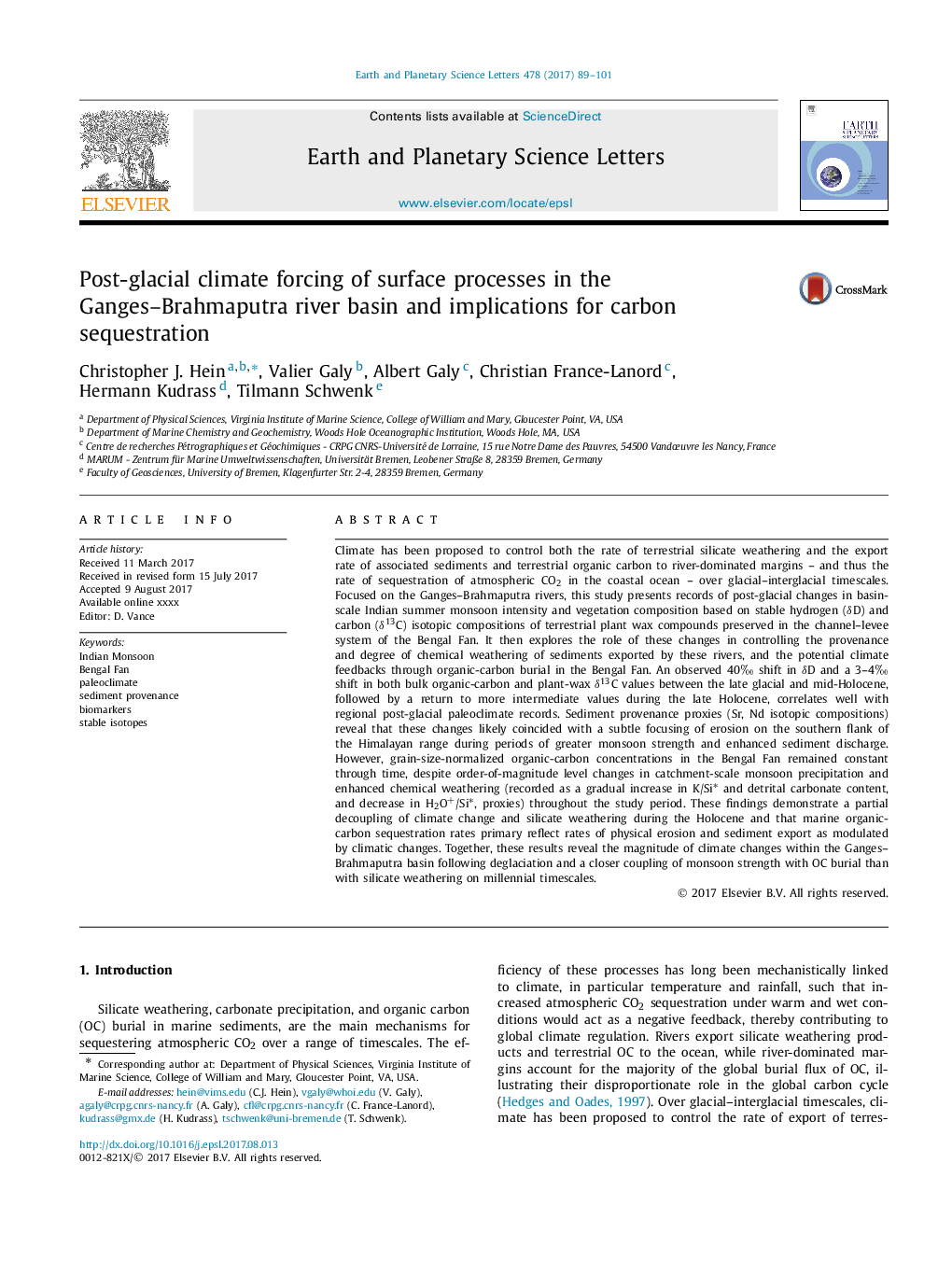| کد مقاله | کد نشریه | سال انتشار | مقاله انگلیسی | نسخه تمام متن |
|---|---|---|---|---|
| 5779558 | 1634678 | 2017 | 13 صفحه PDF | دانلود رایگان |
عنوان انگلیسی مقاله ISI
Post-glacial climate forcing of surface processes in the Ganges-Brahmaputra river basin and implications for carbon sequestration
ترجمه فارسی عنوان
فرسایش پس از یخبندان، فرایندهای سطحی در حوضه رودخانه گنگ - برهامپوترا و پیامدهای آن برای تسهیل کربن
دانلود مقاله + سفارش ترجمه
دانلود مقاله ISI انگلیسی
رایگان برای ایرانیان
کلمات کلیدی
هندسون، طرفدار بنگال، پائول کلمیت رسوب رسوب، بیومارکرها، ایزوتوپهای پایدار،
موضوعات مرتبط
مهندسی و علوم پایه
علوم زمین و سیارات
علوم زمین و سیاره ای (عمومی)
چکیده انگلیسی
Climate has been proposed to control both the rate of terrestrial silicate weathering and the export rate of associated sediments and terrestrial organic carbon to river-dominated margins - and thus the rate of sequestration of atmospheric CO2 in the coastal ocean - over glacial-interglacial timescales. Focused on the Ganges-Brahmaputra rivers, this study presents records of post-glacial changes in basin-scale Indian summer monsoon intensity and vegetation composition based on stable hydrogen (δD) and carbon (δ13C) isotopic compositions of terrestrial plant wax compounds preserved in the channel-levee system of the Bengal Fan. It then explores the role of these changes in controlling the provenance and degree of chemical weathering of sediments exported by these rivers, and the potential climate feedbacks through organic-carbon burial in the Bengal Fan. An observed 40â° shift in δD and a 3-4â° shift in both bulk organic-carbon and plant-wax δ13C values between the late glacial and mid-Holocene, followed by a return to more intermediate values during the late Holocene, correlates well with regional post-glacial paleoclimate records. Sediment provenance proxies (Sr, Nd isotopic compositions) reveal that these changes likely coincided with a subtle focusing of erosion on the southern flank of the Himalayan range during periods of greater monsoon strength and enhanced sediment discharge. However, grain-size-normalized organic-carbon concentrations in the Bengal Fan remained constant through time, despite order-of-magnitude level changes in catchment-scale monsoon precipitation and enhanced chemical weathering (recorded as a gradual increase in K/Siâ and detrital carbonate content, and decrease in H2O+/Siâ, proxies) throughout the study period. These findings demonstrate a partial decoupling of climate change and silicate weathering during the Holocene and that marine organic-carbon sequestration rates primary reflect rates of physical erosion and sediment export as modulated by climatic changes. Together, these results reveal the magnitude of climate changes within the Ganges-Brahmaputra basin following deglaciation and a closer coupling of monsoon strength with OC burial than with silicate weathering on millennial timescales.
ناشر
Database: Elsevier - ScienceDirect (ساینس دایرکت)
Journal: Earth and Planetary Science Letters - Volume 478, 15 November 2017, Pages 89-101
Journal: Earth and Planetary Science Letters - Volume 478, 15 November 2017, Pages 89-101
نویسندگان
Christopher J. Hein, Valier Galy, Albert Galy, Christian France-Lanord, Hermann Kudrass, Tilmann Schwenk,
